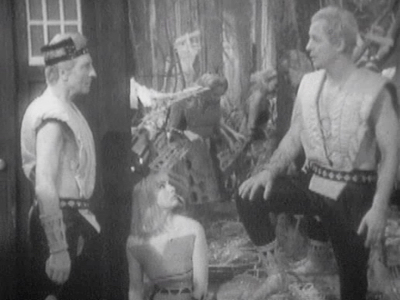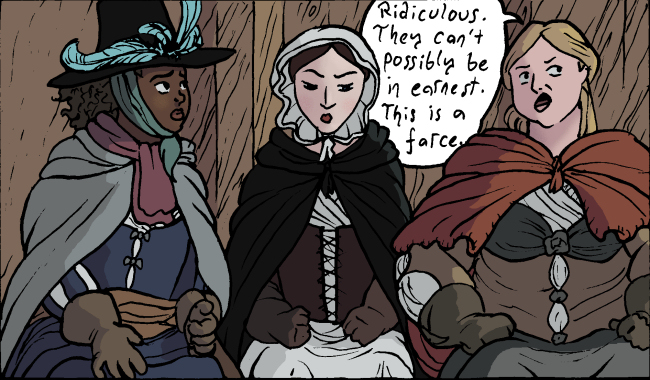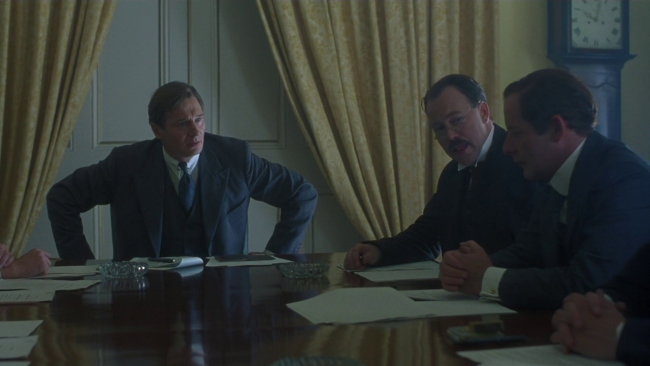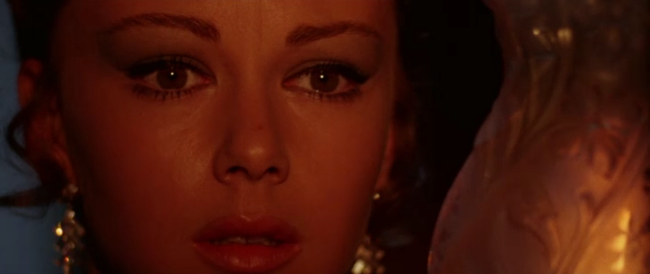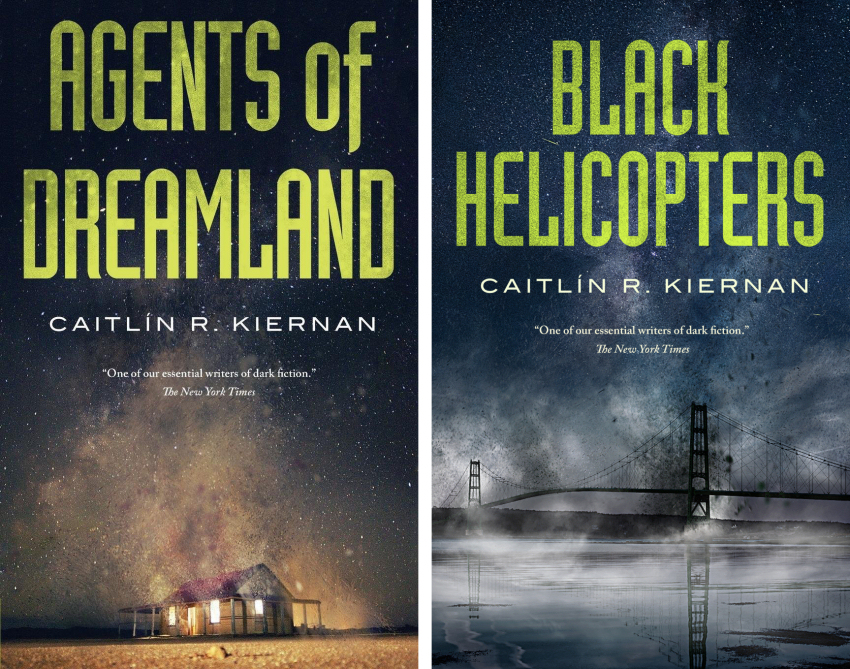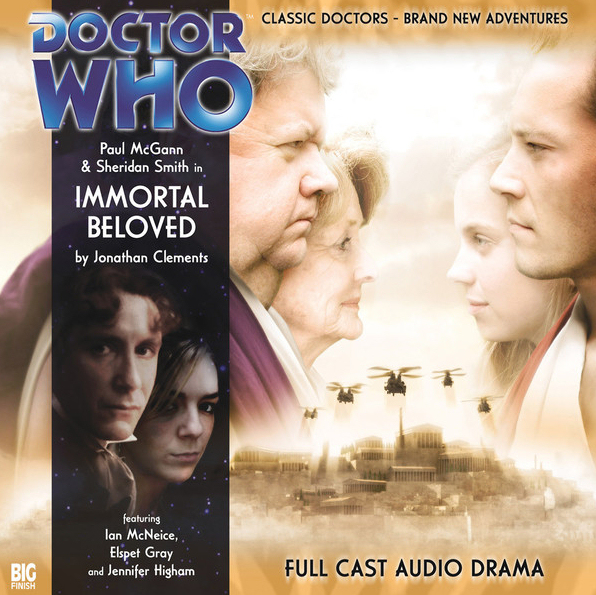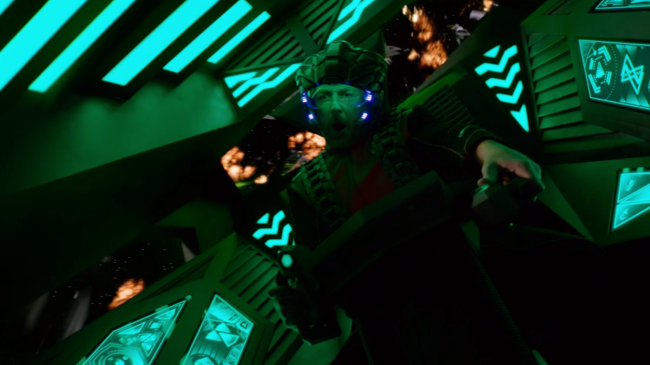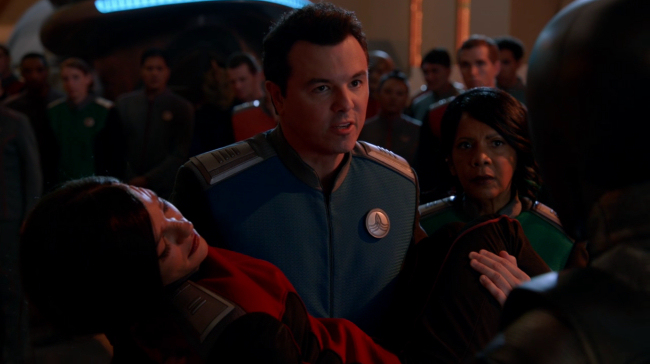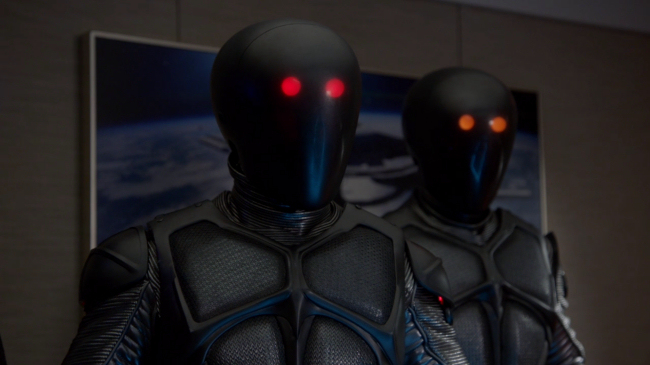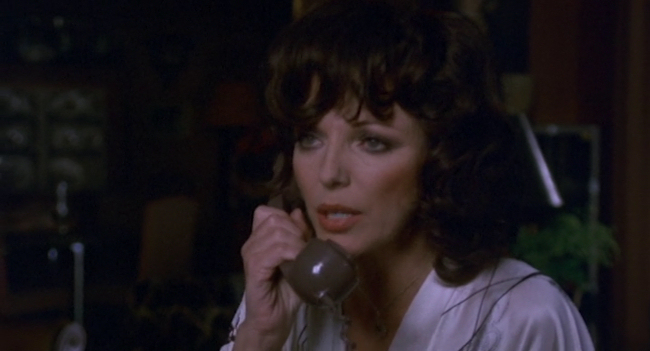
It has a possessed baby, it has distinguished actors taking their roles seriously, but 1975's I Don't Want to be Born (a.k.a. The Devil Within Her and The Monster) never approaches The Exorcist in quality. Some nice dialogue thoughtfully delivered by Donald Pleasence and Eileen Atkins is undercut a bit by thoroughly unconvincing scenes of people getting pummelled to death by a newborn.

Baby's fingers dripping with his mother's blood following an attack when she tried to cuddle him soon after birth is the first real sign of trouble. For the baby's parents because this is not normal infant behaviour, for the audience because we're meant to accept what looks like drops of strawberry syrup on the fingers of a baby with an unmistakably oblivious facial expression as the sign of it cruelly perpetrating an act of physical violence. I wonder if anyone dared point out to director Peter Sasdy that one of the reasons The Exorcist worked is we were eventually able to see Linda Blair looking pretty convincingly demoniac.
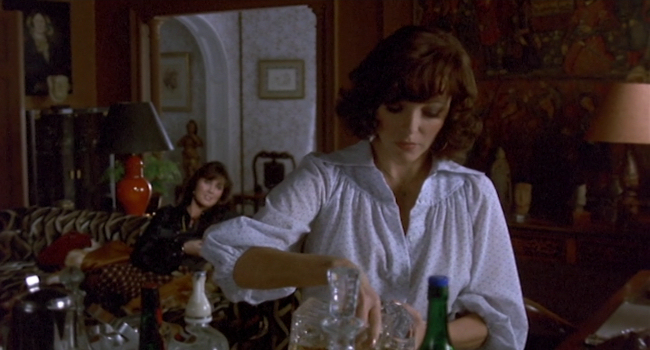
Joan Collins is delicious as the baby's self-centred mother and I did like the scene where she narrates a flashback of the child's conception. Lucy (Collins) had worked as a stripper in a burlesque club where she performed with a dwarf named Hercules (George Claydon). In the flashback scene, she grudgingly admits to being turned on when he unexpectedly began fondling her in her dressing room but she angrily rejected him, pushing him away when he grabbed for her breasts. And so, like many evil dwarves before him, he takes revenge by putting a curse on Lucy. In case anyone thought this curse's relationship to the baby was too ambiguous, shots of Hercules in the crib in place of the baby are flashed for Lucy in moments when it's being particularly malevolent.

Lucy's husband, Gino (Ralph Bates), is blissfully unaware the baby might not be his, his guilelessness emphasised by an Italian accent so broad Chico Marx might call it stagey.

Gino's sister, a nun, has an accent not much more convincing but she's played with enough steel and intelligence by Eileen Atkins to make her seem the worthy counterpart to Max von Sydow in The Exorcist. She almost elevates every scene she's in, but maybe no performance can make up for a hairy little hand swatting up at adults from a crib. But I did really like a scene between Atkins and Pleasence, who plays the family's doctor. They have a fairly predictable debate about faith and science, with Pleasence concluding that, "a doctor can't write up a prescription against evil and violence. It's one of the severest limitations of our profession." But I love how Pleasence plays the scene. Except for the slightest of hints in his last few lines there's little sense of smugness in him and there's a sparkle in Atkins' eye that suggests her shrewd excitement in engaging in debate. I'd have loved to have seen these two as adversaries in a better movie with better dialogue.

This film is effectively funny, even if it didn't mean to be. Well, I'm pretty sure Lucy's hilariously useless stripper friend played by Caroline Munro was meant to be funny. I Don't Want to be Born is available on Amazon Prime under the title of The Monster.








